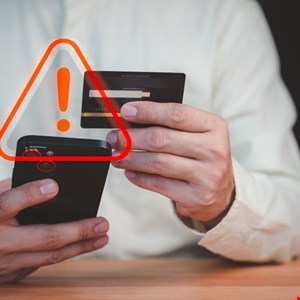- US companies are helping Saudi Arabia to build an AI powerhouse
- US companies are helping Saudi Arabia to build an AI powerhouse
- My favorite Garmin feature comes to its new Forerunner watch
- Trade in your phone to Verizon and get almost any new phone for free - here's how
- Beyond Recognition: Celebrating Cisco's Women Channel Leaders in 2025
Fraud Losses Hit $11m Per Company as Customers Abuse Soars

Online merchants lost an average of nearly $11m each to fraud last year, with the risk from first-party fraud growing significantly, according to Ravelin.
The London-headquartered fraud prevention firm surveyed 1466 global fraud and payments professionals in the retail, travel & hospitality, digital goods, and marketplaces sectors to produce its Global Fraud Trends 2025 report.
It found that 77% of respondents recorded a rise in the volume of fraud over the past year, with marketplaces hit particularly hard, and 64% expect it to increase in the coming 12 months.
Nearly half (47%) said that shoppers are now more likely to attempt fraud.
They do this most frequently via chargeback fraud (aka friendly fraud) – where they make a legitimate purchase but then dispute the transaction with their bank, claiming it was unauthorized or that they didn’t receive the goods/services.
However, many are also engaging in refund/returns abuse, where they abuse a merchant’s refund policy for personal gain, such as claiming an item was damaged when it wasn’t.
Read more on fraud: UK Government’s New Fraud Strategy to Focus on Tech-Enabled Threats.
While 61% of respondents to Ravelin’s study said card not present (CNP) fraud is the most expensive for their business, 41% said the same about chargeback fraud and 21% about refund abuse. Over half (54%) of merchants said refund abuse has increased in the past year and a similar share (55%) agree it will continue to rise in the next 12 months.
Although most respondents said they now believe legitimate customers are as big a threat as professional fraudsters, they are loath to clamp down on first-party fraud for fear of losing sales.
Two-thirds (66%) of merchants told Ravelin they consider customer loyalty and brand reputation more important than stopping refund abuse. Three-quarters (76%) said they feel pressured to refund customers even when abuse is suspected.
“Too many retailers are happy to dismiss fraud as a cost of doing business. Downplaying fraud to protect the customer experience is a false dichotomy,” argued Ravelin CEO, Martin Sweeney.
“Armed with the right tools and intelligence, retailers can build context about every single customer, easily telling fraudsters from legitimate shoppers. That enables them to tackle the fraudsters in the right way and ensure good customers get the great online shopping experiences they deserve.”
UK Consumers Account for 51% of Fraud
The findings echo similar research from LexisNexis this week, which revealed that first-party fraud (ie consumers) now account for over 50% of total fraud in the UK. That’s a 33% annual increase and way more than the share for both scams (16%) and account takeovers (15%).
Globally, first-party fraud is also the dominant fraud type, but with a much smaller share (36%). A period of sustained inflation and rising living costs is said to be contributing to the trend.
LexisNexis claimed Buy Now, Pay Later (BNPL) providers and financial institutions are among those most affected. It counts giving false information when applying for a loan as part of first-party fraud.
“The change in composition of attacks presents a significant challenge for fraud prevention since detecting first-party fraud requires a subtly different approach from detecting scams or account takeovers,” explained Stephen Topliss, vice president of fraud and identity at LexisNexis Risk Solutions.
“Organizations can’t afford to be complacent, however – there were more than three billion brute-force automated account takeover attacks detected last year alone and scams remain a global problem. It is vital for organizations to have models tuned to detect these varied forms of fraud.”

